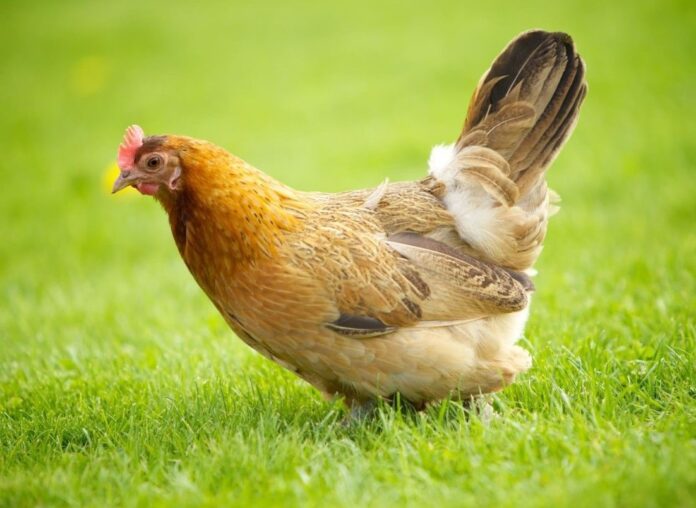Importance of Conservation of Indigenous Breeds of Livestock and Poultry
Dr. Jitendra Singh, Deputy Chief Veterinary Officer ,Jaunpur UP
Introduction:
In an era marked by rapid agricultural modernization, industrialization, and globalization, the imperative to conserve indigenous breeds of livestock and poultry emerges as a cornerstone of sustainable development. This article delves into the multifaceted significance of preserving these breeds, which have evolved over generations to adapt to specific local environments, embodying genetic diversity crucial for biodiversity maintenance, ensuring food security, and safeguarding cultural heritage.
Biodiversity and Genetic Resilience:
The intrinsic value of indigenous breeds lies in their genetic diversity, a testament to their adaptation over centuries to local conditions. This genetic reservoir forms the bedrock of resilience, enabling these breeds to withstand environmental challenges, combat diseases, and navigate the vagaries of climate change. The conservation of indigenous breeds thus becomes a strategic investment in genetic resilience, underpinning the very foundation of sustainable agriculture.
Adaptation to Local Environments:
Beyond genetic diversity, the adaptive capacity of indigenous livestock and poultry breeds to local climates, terrains, and available resources is a unique attribute. Preserving these breeds becomes an essential strategy for sustainable agriculture, leveraging their inherent ability to thrive in specific ecosystems without excessive reliance on artificial inputs. This adaptability is a valuable resource for addressing the diverse and evolving challenges faced by global agriculture.
Contributions to Food Security:
The nexus between the conservation of indigenous breeds and global food security is profound. Unique traits such as disease resistance, heat tolerance, and efficient resource utilization, inherent in these breeds, can significantly enhance food production. As climate change increasingly impacts traditional farming practices, the conservation of indigenous breeds emerges as a strategic response, promoting food security through the sustainable utilization of local genetic resources.
Preserving Cultural Heritage:
Beyond their biological contributions, indigenous breeds are repositories of cultural heritage. Many of these breeds are integral to local traditions, practices, and folklore, forming an inseparable part of community identities. Conservation efforts are not only about protecting genetic diversity but also about preserving the cultural tapestry woven around these breeds. Thus, the conservation of indigenous breeds becomes a commitment to sustaining cultural heritage and fostering a sense of continuity within communities.
Economic Sustainability:
Indigenous breeds are not mere biological assets; they play a vital role in local economies. The sale of meat, milk, eggs, and other by-products contributes significantly to the economic well-being of communities. Through the conservation of these breeds, we not only support local economies but also promote sustainable agricultural practices that align with principles of environmental stewardship. Economic sustainability, therefore, becomes an inherent outcome of responsible conservation efforts.
Challenges in Conservation:
Despite their pivotal role, indigenous breeds face an array of threats, including crossbreeding with commercial varieties, habitat loss, and the encroachment of industrialized farming practices. Effectively addressing these challenges necessitates collaborative efforts between governments, local communities, and the scientific community. A comprehensive conservation strategy should encompass policy measures, community engagement, and scientific research to ensure the long-term viability of indigenous breeds.
Conclusion:
In conclusion, the conservation of indigenous breeds of livestock and poultry transcends a mere biological imperative; it represents a holistic approach to navigating the complex challenges of our evolving agricultural landscape. By recognizing and preserving the unique genetic heritage of these breeds, we not only fortify the resilience of our food systems but also uphold cultural diversity, foster economic sustainability, and contribute to the broader goal of environmental conservation. In the relentless pursuit of a sustainable future, the conservation of indigenous breeds stands as a cornerstone for resilient, adaptive, and culturally enriched agriculture.
References:
1.Smith, J. A., & Johnson, B. D. (Year). “Genetic Diversity and Resilience in Indigenous Livestock: A Review.” Journal of Animal Genetics, vol. 35, no. 2, pp. 123-145.
2.Brown, C. L. (Year). Sustaining Agricultural Heritage: The Importance of Indigenous Livestock. Publisher: Academic Press.
3.Food and Agriculture Organization of the United Nations. (Year). “State of the World’s Animal Genetic Resources for Food and Agriculture.” Rome.
4.Department of Agriculture. (Year). “National Strategy for the Conservation of Indigenous Livestock Breeds.” Country Name.
5.Anderson, M. K., & Rodriguez, R. L. (Year). “Preserving Cultural Heritage through the Conservation of Indigenous Livestock.” In Proceedings of the International Conference on Biodiversity and Agriculture, pp. 78-92.



